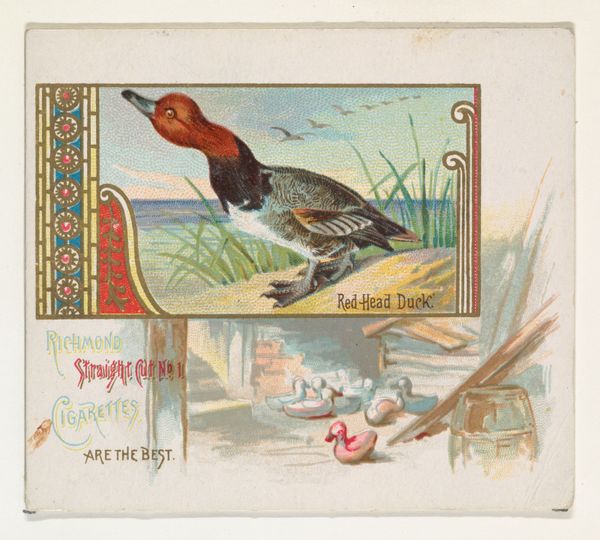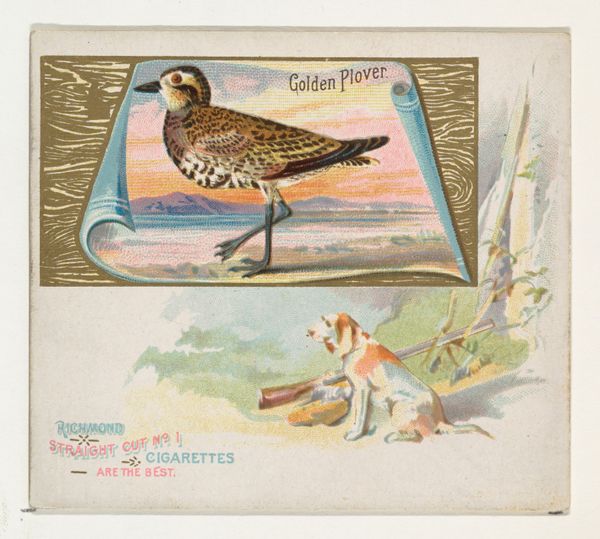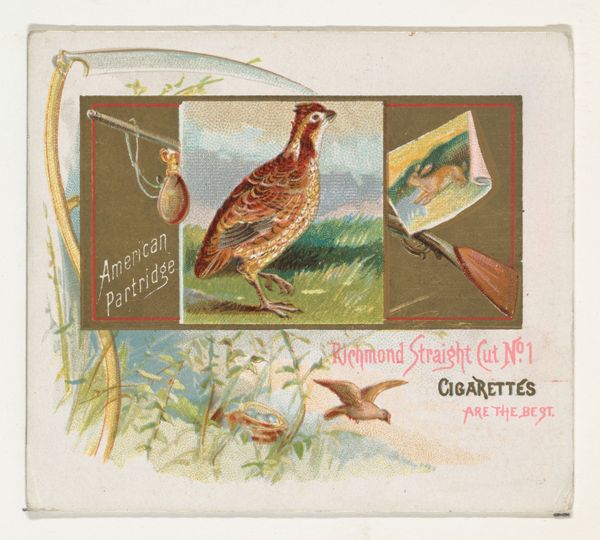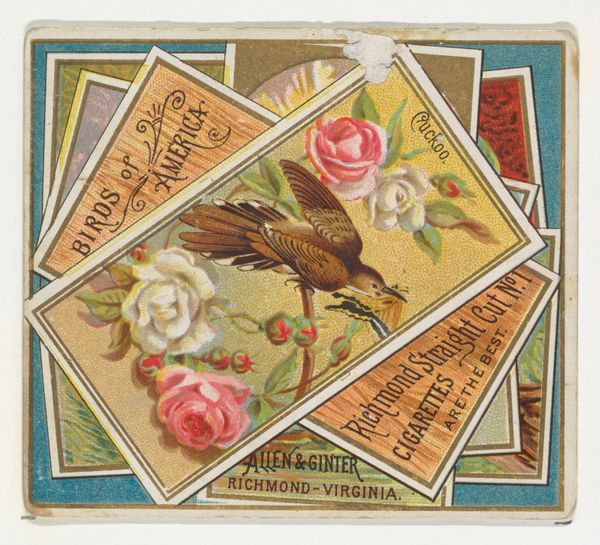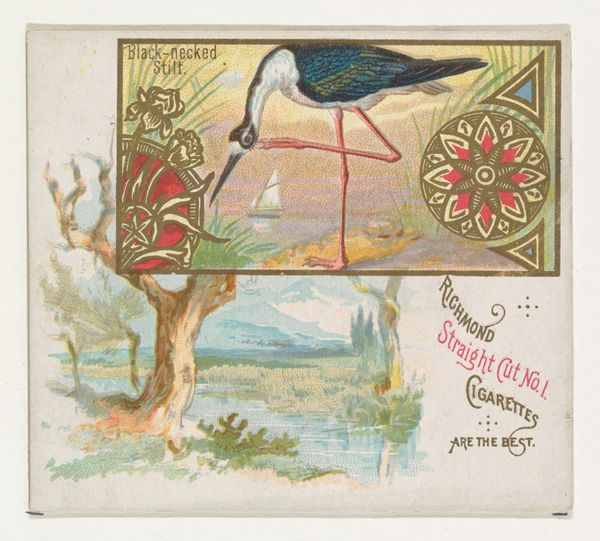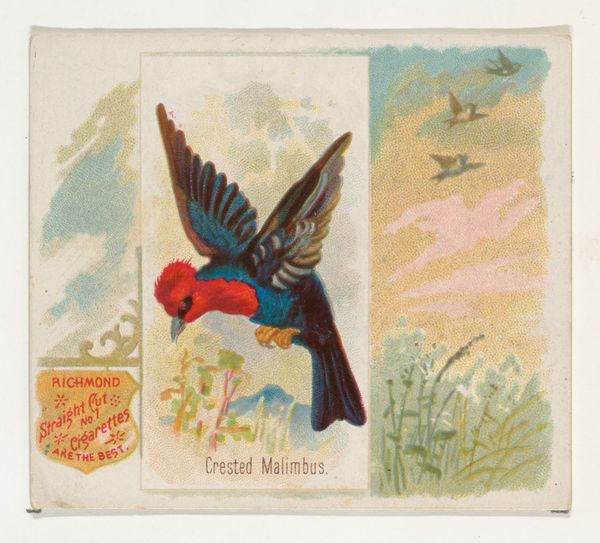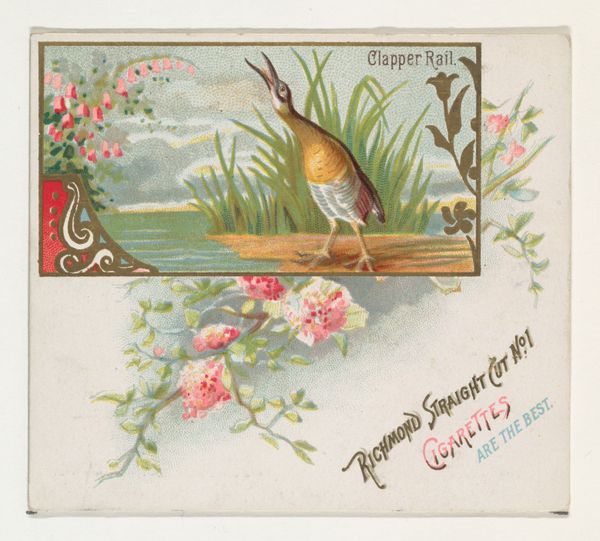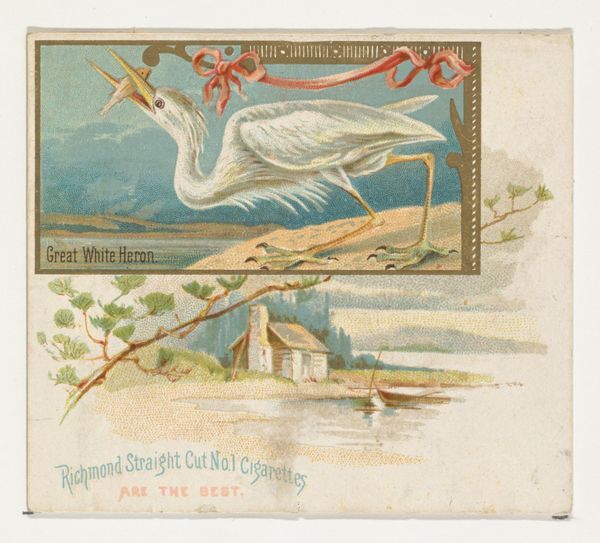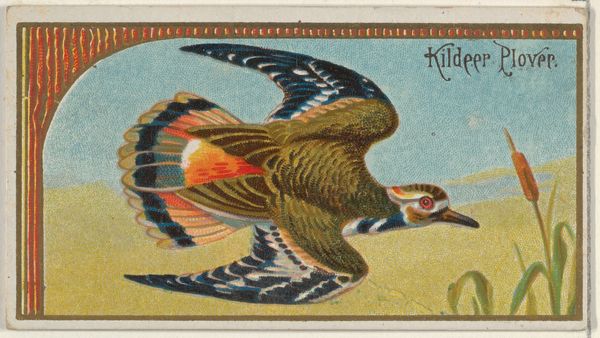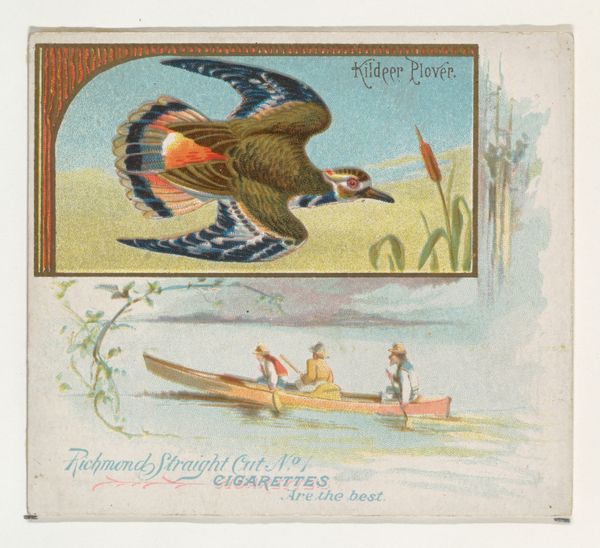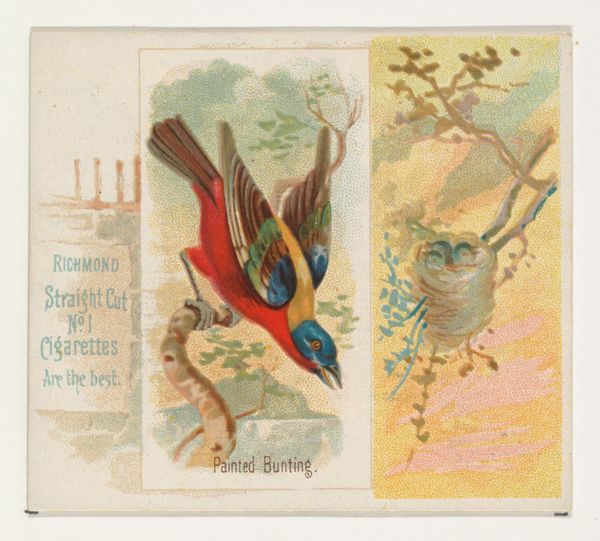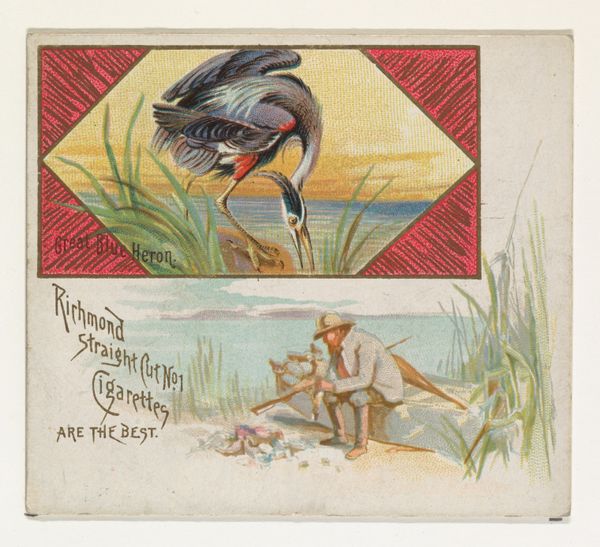
Wood Duck, from the Game Birds series (N40) for Allen & Ginter Cigarettes 1888 - 1890
0:00
0:00
# print
#
watercolor
Dimensions: Sheet: 2 7/8 x 3 1/4 in. (7.3 x 8.3 cm)
Copyright: Public Domain
Editor: This chromolithograph, titled "Wood Duck" and made between 1888 and 1890 by Allen & Ginter as part of their "Game Birds" series for cigarette cards, has such an unusual feel. It’s a blend of naturalism and stylized design that I find captivating. How do you interpret the symbols and imagery used in this print? Curator: The duck takes flight as a symbol for prosperity and freedom of movement, values being cultivated in American consciousness during this period. Yet this natural element is framed and subtly, marketed, domesticated. What do you make of the integration of flora in this piece? Editor: I hadn't thought of it that way! The foliage at the bottom adds a sense of the duck's natural habitat, contrasting with the rather artificial frame around it. Is that contrast important? Curator: The contrast you noted points to Japonisme, influencing Western art in that era, echoing a fascination with nature. What emotional impact do these contrasts achieve? Does the framing domesticate, perhaps even promise, an easy capture of nature’s bounty? Editor: I see what you mean now. There is a strange tension between the wildness of nature and this sense of something contained, a promised possession maybe? It feels like there are so many layers! Curator: Exactly. Even the cigarette brand name and text have an elegant integration. The image presents nature as refined, collected, like a sophisticated collection. Editor: Thank you, that's so insightful! It's fascinating to consider how these historical images both reflected and shaped cultural values. Curator: Indeed, it helps us look back on evolving perception—commodification—of the world around us.
Comments
No comments
Be the first to comment and join the conversation on the ultimate creative platform.
